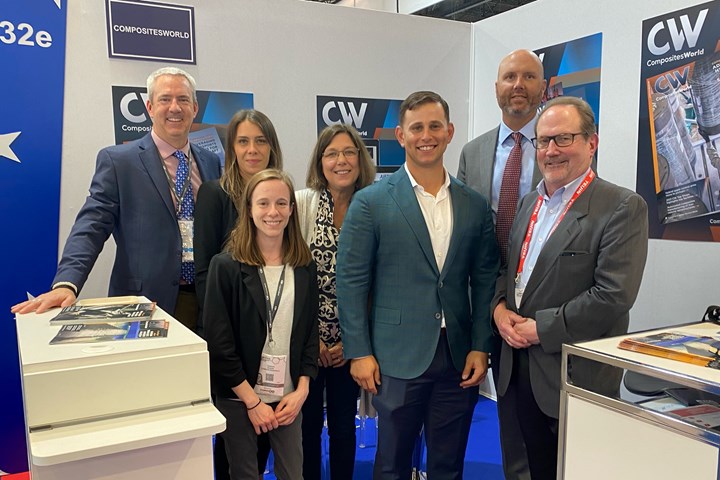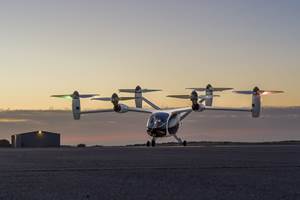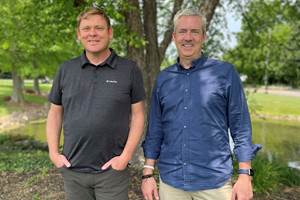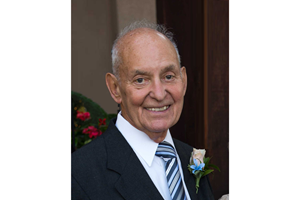What to make of the first JEC World in three years
CW went to JEC World 2022 not sure what to expect. We were pleasantly surprised, and learned much about where and how new composites technologies are being developed.
CW team at JEC World 2022. Left to right: Jeff Sloan, editor-in-chief; Simone Mas, European sales manager; Hannah Mason, associate editor; Ginger Gardiner, senior editor; Michael Schwartz, regional manager; Rick Brandt, VP Advanced Materials Media Group; Scott Stephenson, director, strategic initiatives and events. Photo Credit: CW
The world’s largest composites trade event, JEC World, is held each March in Paris, France. The last in-person JEC World was in 2019, thus its in-person return this year was set up to — potentially — send a strong signal that the industry is returning to a real and sustainable normalcy.
Still, even this seemed uncertain, further emphasized this year by the event’s postponement from March 8-10 to May 3-5 because of the omicron outbreak. Because of this, it was difficult to know, as we headed to Paris, how robust the first JEC in three years would be. It was easy to be cautiously optimistic; just being in person again is enough to sunny anyone’s outlook, but at the same time, too high expectations risk being unmet.
What we experienced during those three days was a surprisingly busy, robust, active and even crowded JEC World. The second day, in particular, harkened back to a pre-COVID busyness that I don’t think anyone anticipated. Indeed, everyone I spoke to was either surprised or shocked at how well attended the show was.
So, what was all of this activity about? CW was there, made the rounds and this is some of what we heard.
Sustainability. This was the official theme of the show, but even without that, sustainability was the word we heard most often. The idea is simple: Develop materials, manufacturing processes and finished composite products that minimize the carbon footprint of the industry and help mitigate climate change. Implementation is not simple. There was talk about increased use of natural fibers, development of carbon fiber precursors sourced from biomass, application of bio-based resin systems, recycling of wind blades, recycling of epoxy, increased use of energy from renewable sources, more robust and thorough lifecycle analyses (LCA) and much more. Some of this talk was just talk — or at least early-stage action; some of this talk reflected a real commitment to sustainability. In any case, it was clear that there is no “silver bullet” of sustainability. There are cost, energy, resource and waste tradeoffs in every effort we make to mitigate negative impacts on the planet and the future of the human race. Solutions are complex and will require diligent R&D to develop. It is clear, however, that the composites industry is very focused on finding those solutions.
It’s fair to say that JEC World 2022 was a definitive success.
Hydrogen. Running a close second to sustainability, and related to sustainability, was hydrogen. Or, more specifically, composite pressure vessels for hydrogen storage. We have been tracking this market closely and thus expected it would be a focus of the show, but the shear number of pressure vessels on exhibit at JEC took us by surprise. Many fiber and resin suppliers, equipment suppliers and fabricators were eager to share the work they’ve done to optimize their products for use in hydrogen pressure vessels. The industry clearly sees use of hydrogen to power trucks, buses, trains, ships and aircraft as a viable and fast-emerging application, which could quickly become one of the world’s largest consumers of carbon fiber. We also confirmed what we’d already heard: Fuel cells will power land-based vehicles, while direct combustion will be deployed in commercial aircraft.
Data. The composites industry’s increased use of automation is expanding the amount of material and manufacturing process data available to fabricators. Capturing that data, organizing it and analyzing it to optimize manufacturing operations is becoming a competitive advantage. Fabricators that can use data in real time to improve designs and drive process control are setting themselves apart. This technology is not going away.
Boeing and Airbus. The big question hanging over the aerospace industry the last year or so has been when either Boeing or Airbus might announce a new single-aisle aircraft program. Consensus at JEC was that the ball is in Boeing’s court. Airbus has a strong aircraft portfolio and a competitive advantage — it does not need to move first. Boeing, by comparison, has a relatively weak aircraft portfolio and, although cash-strapped, likely will have to announce a new program sooner than later. When? Unknown. Stay tuned.
There is, of course, much more that we learned. Some of this will be reported now and some will take the form of stories and content to be developed later this year and in 2023. In any case, it’s fair to say that JEC World 2022 was a definitive success and that COVID is, finally, more behind us than in front of us.
Related Content
The return of trade show season
SAMPE Seattle, JEC World and the Paris Air Show are approaching fast, and they signal the real emergence of a post-pandemic world.
Read MoreHow composites have become a necessity
Composites used to be one of many material options across industries and applications, but that's not the case anymore.
Read MoreUp, not out: The next chapter of CompositesWorld
I have been editor-in-chief of CompositesWorld for 17 years, which translates into a lot of editorials. This will be my last as I become publisher of CW. We welcome Scott Francis back to the brand to take my place.
Read MoreRemembering Don Adams
When one thinks of composites test methods, one thinks of Don Adams. Don passed away at the end of 2022. We remember him here.
Read MoreRead Next
JEC World 2022 day 1 recap
CompositesWorld comes at you from Paris, France, as its editors navigate the landscape that is the first in-person JEC World trade show since 2019.
Read MoreVIDEO: High-volume processing for fiberglass components
Cannon Ergos, a company specializing in high-ton presses and equipment for composites fabrication and plastics processing, displayed automotive and industrial components at CAMX 2024.
Read MoreAll-recycled, needle-punched nonwoven CFRP slashes carbon footprint of Formula 2 seat
Dallara and Tenowo collaborate to produce a race-ready Formula 2 seat using recycled carbon fiber, reducing CO2 emissions by 97.5% compared to virgin materials.
Read More























